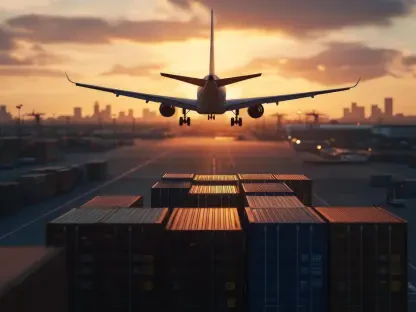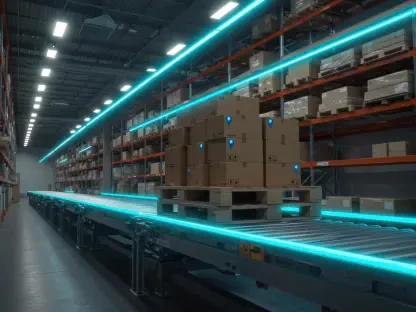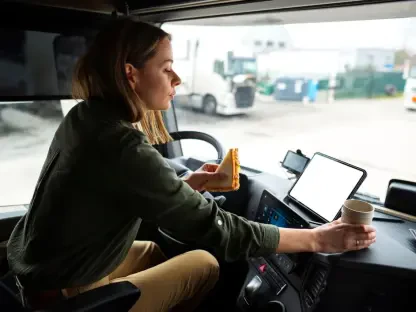In the heart of America’s highways, a silent battle unfolds daily as massive commercial trucks roar past unsuspecting motorists, some driven by individuals who may lack adequate training due to relaxed regulations. Picture a family on a cross-country road trip, oblivious to the fact that the 80,000-pound rig barreling beside them might be operated by a novice driver, unsupervised and unprepared for sudden hazards. This scenario isn’t mere speculation—it’s a growing concern as small-business truckers sound the alarm over policies that seem to value filling driver seats over ensuring safety. What drives this dangerous compromise, and how can Congress address it before more lives are at risk?
The importance of this issue cannot be overstated, as the trucking industry forms the backbone of the nation’s economy, transporting over 70% of all freight. Yet, with millions of drivers sharing the roads alongside these heavy vehicles, public safety hangs in a delicate balance. The Owner-Operator Independent Drivers Association (OOIDA), representing independent truckers, has urged Congress to prioritize rigorous training and oversight over economic shortcuts that flood the market with underprepared drivers. This debate isn’t just about industry standards—it’s about protecting every road user from preventable tragedies that could stem from inadequate policies.
Why Are Roads at Risk? Unpacking the Trucking Safety Crisis
Every day, countless vehicles navigate highways dominated by commercial trucks, often without realizing the potential dangers lurking behind relaxed safety rules. OOIDA has raised a critical red flag, pointing to a troubling trend where regulatory waivers allow inexperienced drivers to operate massive rigs with minimal oversight. The stakes are high—according to the Federal Motor Carrier Safety Administration (FMCSA), large truck crashes resulted in over 5,000 fatalities in a recent year, a statistic that underscores the urgency of addressing gaps in driver preparation.
This crisis stems from a push to fill labor gaps in an industry struggling with high turnover, often at the expense of stringent standards. Small-business truckers argue that the focus on quantity over quality in driver recruitment creates a ripple effect, endangering not just the drivers themselves but every person on the road. The question looms large: is the cost of cheaper labor worth the price of compromised safety?
The Stakes of Regulation: Balancing Safety and Economic Demands
At the core of this controversy lies a fierce clash between safety imperatives and economic pressures within the trucking sector. On one side, OOIDA contends that loosening regulations to boost driver availability undermines the foundation of road safety, especially during a prolonged freight recession that has strained the industry. Their concern is echoed by safety advocates who warn that cutting corners on training exacerbates risks for all highway users.
On the other side, economic realities cannot be ignored, as businesses grapple with delivering goods amid labor shortages and rising costs. The tension between maintaining high safety standards and meeting market demands has placed Congress in a pivotal position to shape the future of the industry. Decisions made now will resonate far beyond trucking companies, impacting the daily lives of millions who depend on safe roadways for travel and commerce.
Breaking Down Policies: Where Safety Standards Are Weakening
A closer look at current and proposed regulations reveals specific measures sparking heated debate among stakeholders. The FMCSA’s waivers, for instance, permit Commercial Learner’s Permit (CLP) holders to drive without a licensed supervisor in the front seat, a practice OOIDA deems reckless. Additionally, a rule titled “Increased Flexibility for Testing,” slated for finalization next year, would further ease requirements by allowing CLP holders to operate unsupervised after passing skills tests and eliminating mandatory waiting periods.
Another contentious proposal, the Drive Safe Act, seeks to lower the Commercial Driver’s License (CDL) age limit, potentially introducing even younger, less experienced drivers into the mix. OOIDA challenges the narrative of a driver shortage often used to justify such policies, citing an oversupply of drivers relative to freight demand. These measures, critics argue, risk flooding the industry with individuals unprepared for the complex challenges of long-haul trucking, raising serious questions about public safety.
The data paints a stark picture—high driver turnover, often linked to inadequate training, continues to plague the sector, with some studies estimating annual rates as high as 90% among large carriers. Without robust mentorship and strict oversight, new entrants face heightened risks of accidents, perpetuating a cycle of instability. Each of these policies represents a choice between immediate labor solutions and the long-term integrity of highway safety.
Voices from the Front Lines: Truckers and Experts Speak Out
Listening to those directly affected brings a human dimension to this policy debate, starting with OOIDA’s impassioned plea to Congress. In a recent letter to transportation committee leaders, the association stated, “Safety must not be sacrificed for the sake of cheap labor; stricter training and English language proficiency are non-negotiable for protecting our roads.” This stance reflects a deep concern among small-business truckers who witness firsthand the challenges of navigating highways alongside undertrained peers.
Contrastingly, groups like the American Trucking Associations support deregulation, arguing that flexibility in testing and licensing is essential to address labor needs in a competitive market. Their perspective emphasizes operational efficiency, suggesting that easing entry barriers can help sustain the flow of goods nationwide. However, this view often overlooks the real-world implications for new drivers thrust into high-pressure situations without proper guidance.
Consider a hypothetical yet all-too-plausible scenario: a young driver, fresh from a minimal training program, faces a sudden tire blowout on a busy interstate with no mentor to turn to for advice. Such moments highlight the potential consequences of inadequate preparation, where split-second decisions can mean the difference between safety and disaster. These personal stakes remind policymakers that behind every regulation are lives hanging in the balance.
Charting a Path Forward: Congressional Steps to Secure Highways
Amid this complex debate, actionable solutions emerge as a way for Congress to reconcile safety with industry demands. Drawing from OOIDA’s recommendations for the upcoming highway bill reauthorization, key reforms include enforcing robust Entry-Level Driver Training standards to ensure new truckers are thoroughly prepared. Additionally, maintaining integrity in issuing non-domiciled CDLs can prevent unqualified individuals from slipping through regulatory cracks.
Further steps involve mandating strict supervision for novice drivers during their initial months on the road, providing a safety net as they gain experience. Policymakers could also prioritize English language proficiency requirements to facilitate clear communication in critical situations. These measures aim to shift the focus from short-term labor fixes to sustainable practices that bolster both driver competence and public trust in the trucking industry.
Ultimately, Congress holds the power to redefine the landscape of highway safety by championing policies that value preparation over expediency. By investing in comprehensive training and oversight, lawmakers can pave the way for a future where economic needs and road safety coexist without compromise. This framework offers a blueprint for long-term stability, ensuring that every journey—whether by truck or family car—remains secure.
As the debate over trucking regulations unfolds, stakeholders on all sides grapple with the profound implications of each decision made in legislative chambers. Reflecting on the path ahead, it becomes clear that the road to safer highways demands a renewed commitment to rigorous standards and thorough training. Congress faces a historic opportunity to enact reforms that will protect countless lives, with the potential to set a precedent for balancing industry needs with public welfare. The next steps hinge on prioritizing actionable policies—strengthening driver preparation, enforcing strict oversight, and fostering an environment where safety is never a negotiable commodity.









